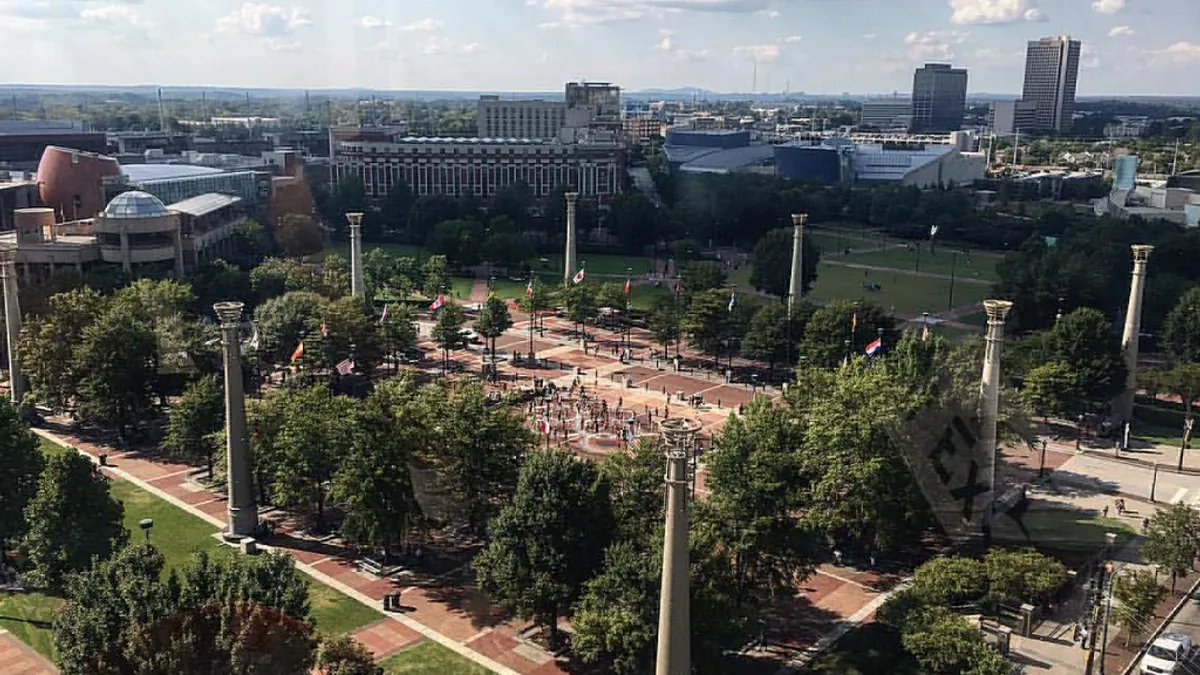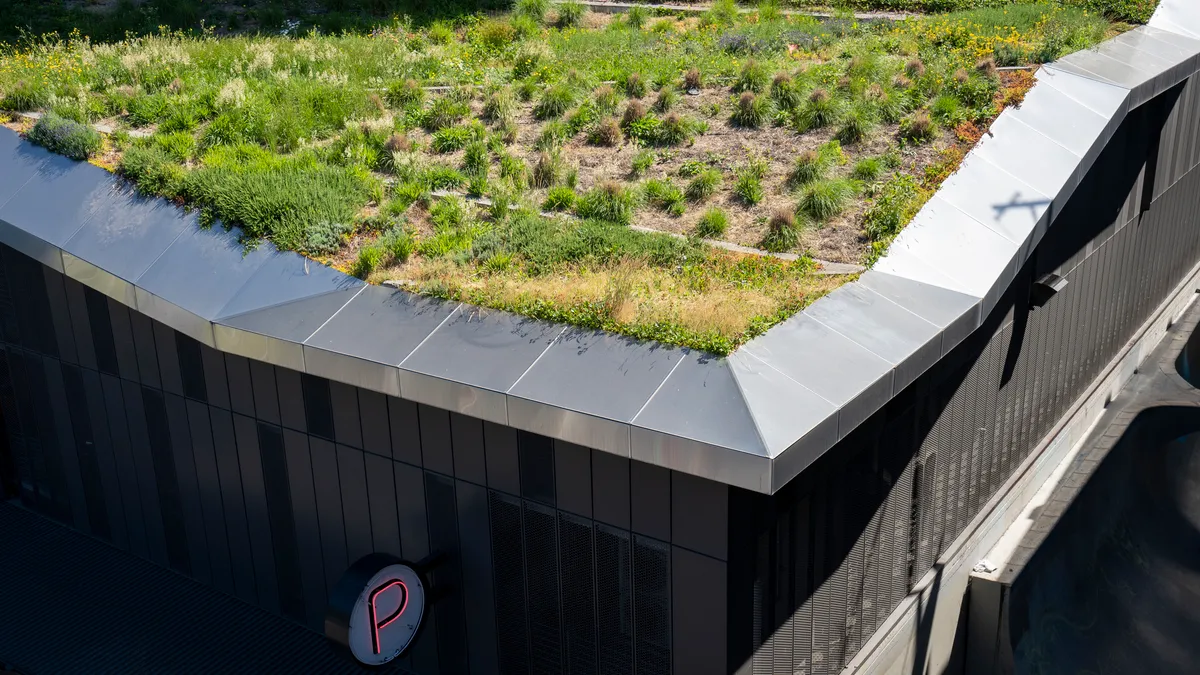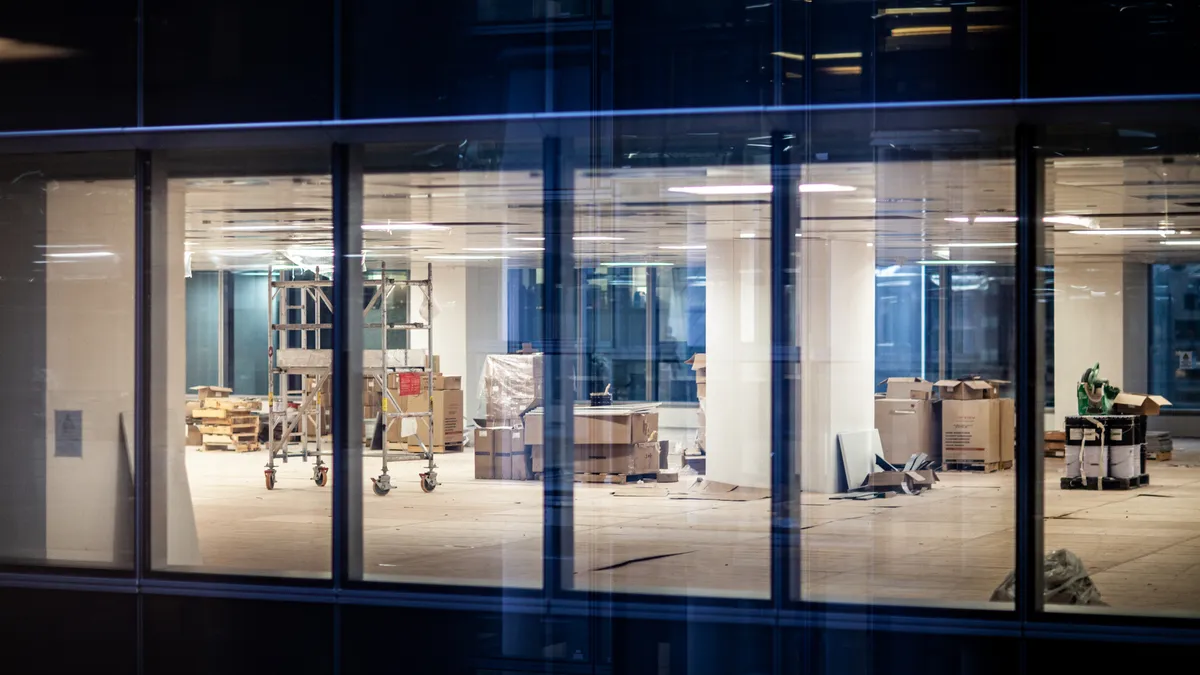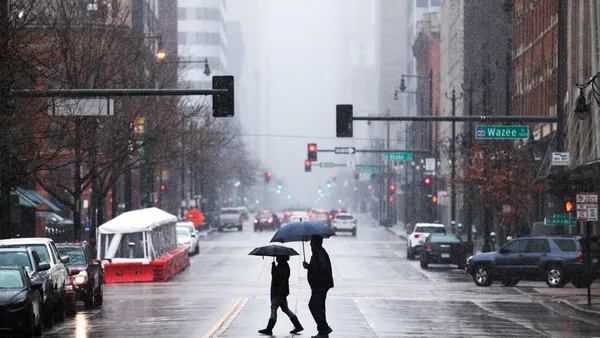Dive Brief:
- A systematic literature review shows building multifunctional parks is key to support short- and long-term recovery after earthquakes. Researchers from the University of Guelph in Canada concluded there is not enough open green space for communities to gather after disasters, and city planners need to proactively plan to increase seismic resilience.
- Parks should be multifunctional in case of emergency, with gathering places, shelter, food, water, waste management, radio broadcasting and power. Parks should function not only as self-sufficient hubs, but in a network with redundancies, alternate connections and critical infrastructure like hospitals and emergency services dispersed.
- Research suggests that city planners should expect that parks will accommodate all people after a disaster, with an average area of 21-square-feet per person. However, even creating small-to-medium sized parks enhances recovery, without changing the urban fabric.
Dive Insight:
Researchers found that very few open spaces are designed to support recovery after an earthquake, yet parks are frequently the main or only gathering places after such disasters.
"I've been in charge of a large park system and visited a lot of our systems, and I’ve never seen deliberate planning for public spaces functioning as earthquake relief areas," Adrian Benepe, senior vice president and director of national programs for The Trust for Public Land, told Smart Cities Dive.
By 2050, the number of people in earthquake-prone cities will double, according to the study, increasing the need to design open spaces like streets, plazas, stadiums and parks with resources after disasters.
"People's immediate instinctive reaction is to get away from buildings and out into open spaces where things won't fall on them," said Benepe. "I was in New York City during 9/11. There was a lot of panic in the city, and people just instinctively went to the parks."
However, there's currently little information on designing public open space to support seismic resilience, according to Emily French, a lead researcher on the report.
"Open spaces can be planned, designed and retrofitted to support survival and recovery," she told Smart Cities Dive in an email. "There is little information on the specific characteristics or qualitative aspects required for public open space to effectively respond to seismic risk."
The survey draws on research from several open spaces in earthquake prone areas, like San Francisco and Japan, where city leaders have sought to design and retrofit open spaces.
Golden Gate Park in San Francisco serves as a prime example of human tendency to converge on green space, said Benepe.
After a major earthquake in San Francisco in 1906 left over 300,000 people displaced, 25,000 people established makeshift camps in park areas and burned buildings. More than 20,000 residents set up permanent camp in Golden Gate and Presidio Parks.
Several years ago, CMG Landscape architects proposed a plan for a Public Architecture design challenge to retrofit Golden Gate Park, drawing on the earthquake in 1906 as well as the 1989 Loma Prieta earthquake, when 12,000 residents were displaced.
The plan followed San Francisco Department of Emergency Management recommendations: that citizens prepare for 72 hours without the daily infrastructural "lifelines": food, water, waste management, energy and shelter, so CMG brought in portable toilets, bottled water and energy, resources used during festivals of the same time span.
The proposal also included fresh water, greywater treatment wetlands, sanitation and fertilizer service, and energy provisions.
"One of the big problems they had in San Francisco was that water lines were ruptured, and there were geysers of water all over the city, and there was no water to fight fires with," said Benepe.
CMG's waste management composting system replaces the dependence on petroleum-based artificial fertilizers for the entire park, according to the CMG website. The site contains an observation tower, drawing water from the park's groundwater system for use, as well as wind turbines and photovoltaics provide energy for event and emergency sound systems and lighting.
In 2017, San Francisco became the first U.S. city with every resident within 10 minutes walking distance to a park, said Phil Ginsburg, General Manager of the San Francisco Recreation and Parks Department, in an interview with Smart Cities Dive. The city’s disaster plans for residents include information about how parks can be utilized after an earthquake, and the department prioritizes park renovation based on seismic risk.
Japan, which has many earthquake-prone cities, has also proposed initiatives for open spaces and green networks, "designed to operate on the regional, city and neighborhood level, to facilitate evacuation of residents to disaster prevention parks, provide access for emergency vehicles, and act as a buffer to stop the spread of fire," French said.
The Rokko Kaze No Sate Koen community park in a dense urban area of Japan has seating designed to be converted into cooking facilities or toilets, and plantings focused on species that were edible. Water also featured heavily in the park design, with play areas that incorporated ponds, wells and water pumps, said French.
“Because of the unpredictable nature of earthquakes, funding retrofits or leaving open space undeveloped can be difficult to justify economically," said French. "However, designing open space for earthquakes should not be seen as a constraint, but an opportunity to enhance the overall quality of the urban environment."










